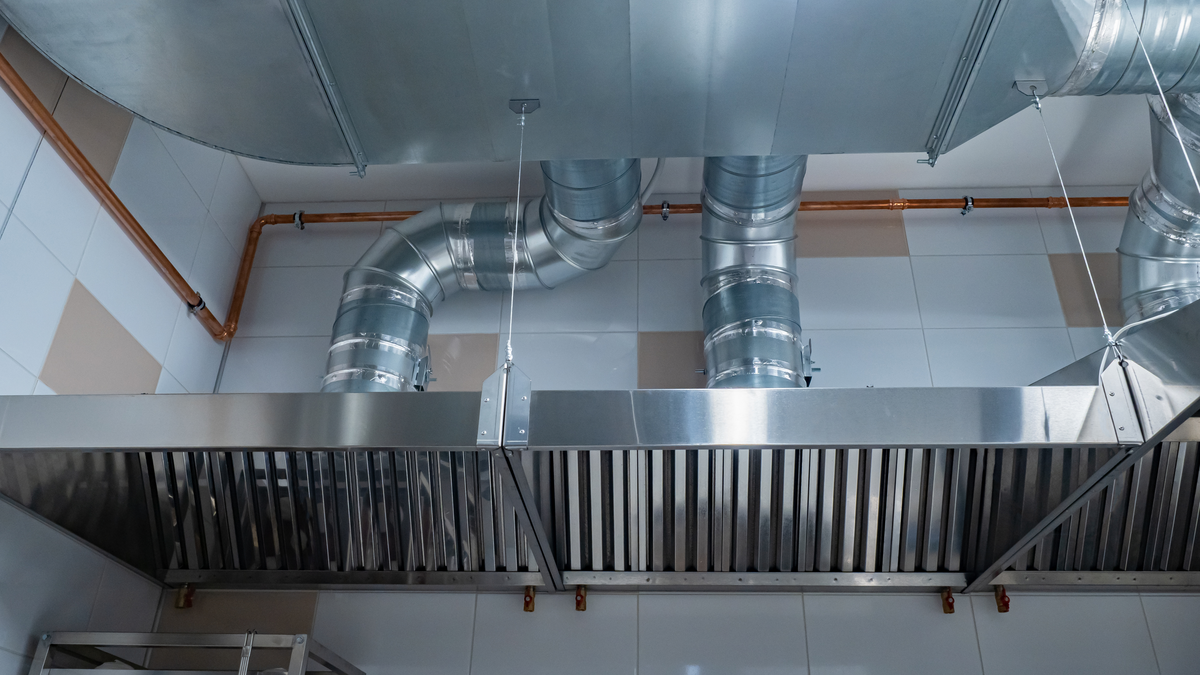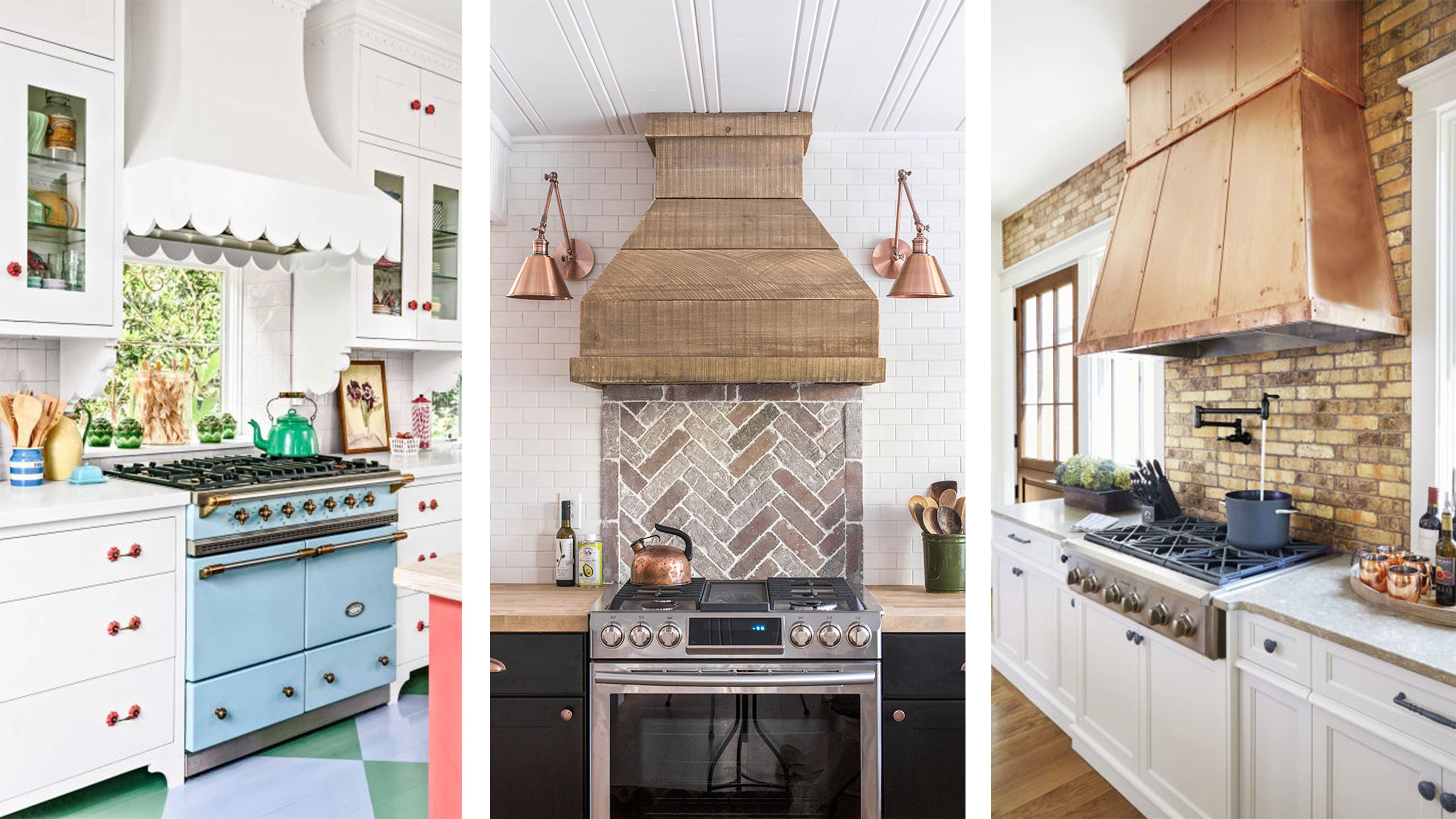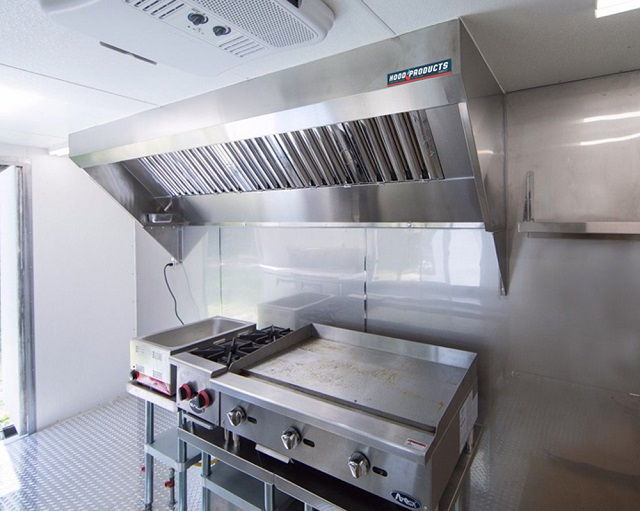1. Ventilation Design for Commercial Kitchens
Proper ventilation is crucial for a commercial kitchen to ensure the safety and comfort of your staff and customers. It also plays a significant role in maintaining the quality of your food and preventing any potential health hazards. When it comes to designing the ventilation system for your commercial kitchen, there are several factors to consider.
First and foremost, the size and layout of your kitchen will determine the type and size of the vent hood needed. A larger kitchen with more cooking equipment will require a larger and more powerful vent hood than a smaller kitchen. It is essential to have a professional assess your kitchen and determine the appropriate size and placement for the vent hood.
Additionally, the type of cooking being done in your kitchen will also impact the ventilation design. For example, a kitchen that primarily uses gas cooking equipment will require a different type of vent hood than one that uses electric equipment.
Proper ventilation design for commercial kitchens also involves considering the location of the hood and exhaust system. The hood should be placed directly over the cooking equipment to capture the smoke, heat, and grease effectively. The exhaust system should be placed in an area where it can easily remove the contaminated air and release it outside the building.
By carefully considering these factors, you can design a ventilation system that efficiently removes smoke, heat, and grease from your kitchen, creating a safe and comfortable environment for your staff and customers.
2. Hood and Exhaust System Design for Commercial Kitchens
When it comes to designing a vent hood and exhaust system for your commercial kitchen, there are several elements to consider. These include the type of hood, the size and placement of the hood, and the type of exhaust system.
There are various types of vent hoods available for commercial kitchens, including wall-mounted hoods, island hoods, and custom hoods. Each type serves a specific purpose and is designed to accommodate different kitchen layouts and cooking equipment.
The size and placement of the hood are also crucial factors to consider. The hood should be large enough to cover all the cooking equipment and effectively capture any smoke, heat, and grease. It should also be placed at the appropriate height to ensure maximum efficiency.
The type of exhaust system you choose will also impact the ventilation design of your commercial kitchen. There are several types of exhaust systems, including canopy-style, down-blast, and up-blast. A professional can help you determine which type is best suited for your kitchen based on its size, layout, and type of cooking equipment.
By carefully considering the hood and exhaust system design, you can create a well-functioning ventilation system that effectively removes smoke, heat, and grease from your kitchen, promoting a safe and comfortable environment.
3. Best Practices for Commercial Kitchen Vent Hood Design
When it comes to designing a vent hood for your commercial kitchen, there are some best practices that you should keep in mind. These practices can help ensure that your ventilation system is effective, efficient, and safe.
Firstly, it is essential to have your kitchen assessed by a professional to determine the appropriate size and placement of the vent hood. They can also help you choose the right type of hood and exhaust system for your kitchen.
Another best practice is to regularly clean and maintain your vent hood and exhaust system. Grease buildup can quickly accumulate and lead to fire hazards and poor ventilation. Regular cleaning can also help extend the lifespan of your equipment and prevent costly repairs or replacements.
It is also crucial to have your ventilation system inspected and serviced regularly by a professional. They can identify any potential issues and ensure that your system is functioning correctly.
By following these best practices, you can ensure that your vent hood design is effective and safe, promoting a healthy and comfortable environment for your staff and customers.
4. Choosing the Right Vent Hood for Your Commercial Kitchen
Choosing the right vent hood for your commercial kitchen is essential for maintaining a safe and comfortable environment. With various types and designs available, it can be overwhelming to know which one is best for your kitchen.
The first step is to assess the size and layout of your kitchen and the type of cooking equipment you use. This will help determine the appropriate size and type of hood needed. For example, a larger kitchen with heavy-duty cooking equipment will require a larger and more powerful hood than a smaller kitchen with lighter equipment.
Next, consider the type of ventilation system you want. Some options include ductless, ducted, and energy recovery systems. Each has its advantages and disadvantages, so it is essential to research and consult with a professional to determine which one is best for your kitchen.
Another factor to consider is the aesthetic design of the hood. It is important to choose a hood that not only functions well but also enhances the overall look of your kitchen. Custom hoods are a popular option for commercial kitchens as they can be designed to fit the specific needs and style of your establishment.
By carefully considering these factors, you can choose the right vent hood for your commercial kitchen, ensuring its effectiveness and functionality.
5. Designing an Efficient Ventilation System for Your Commercial Kitchen
An efficient ventilation system is crucial for a commercial kitchen to maintain a safe and comfortable environment for your staff and customers. Here are some tips to help you design an efficient ventilation system for your kitchen.
Firstly, choose the right type and size of the hood for your kitchen. Consider the type of cooking equipment, size of the kitchen, and layout to determine which hood will be most effective.
Next, ensure that the hood is placed at the correct height and location to capture smoke, heat, and grease effectively. It should also be adequately ventilated to the outside of the building.
Investing in a high-quality exhaust fan is also essential for an efficient ventilation system. The fan should be appropriately sized for your kitchen and able to remove the contaminated air effectively.
Regular maintenance and cleaning of your ventilation system are also crucial. This will prevent any buildup of grease and ensure that your system is functioning at its best.
By following these tips, you can design an efficient ventilation system for your commercial kitchen, promoting a safe and comfortable environment for all.
6. Importance of Proper Vent Hood Design in Commercial Kitchens
Having a proper vent hood design in your commercial kitchen is crucial for several reasons. Firstly, it ensures the safety and comfort of your staff and customers. A well-designed hood effectively removes smoke, heat, and grease, creating a healthier working environment.
Proper vent hood design also plays a significant role in maintaining the quality of your food. Without proper ventilation, the buildup of smoke and grease can affect the taste and appearance of your dishes. It can also lead to potential health hazards for your customers.
Another important reason for proper vent hood design is compliance with health and safety regulations. In many areas, commercial kitchens are required to have a proper ventilation system in place to meet safety standards. Failure to comply can result in costly fines and penalties.
By prioritizing proper vent hood design, you can ensure the safety, comfort, and quality of your commercial kitchen, as well as comply with regulations and avoid potential consequences.
7. Factors to Consider When Designing a Commercial Kitchen Vent Hood
When designing a vent hood for your commercial kitchen, it is essential to consider several factors to ensure its effectiveness and functionality.
Firstly, the size and layout of your kitchen will determine the type and size of the hood needed. It is important to have a professional assess your kitchen to determine the best placement and size for the hood.
The type of cooking equipment used in your kitchen is also crucial. For example, a kitchen with heavy-duty gas equipment will require a different type of hood than one with electric equipment.
The location of the hood and exhaust system is also critical for proper ventilation. The hood should be placed directly over the cooking equipment, and the exhaust system should be placed in an area that can easily remove the contaminated air.
Other factors to consider include the type of exhaust system, aesthetic design of the hood, and regular maintenance and cleaning. By carefully considering these factors, you can design a functional and efficient vent hood for your commercial kitchen.
8. Types of Vent Hoods for Commercial Kitchens
There are various types of vent hoods available for commercial kitchens, each with its unique features and benefits.
Wall-mounted hoods are a popular option for smaller kitchens with limited space. They are mounted on the wall above the cooking equipment and can effectively remove smoke, heat, and grease.
Island hoods are designed for kitchens with cooking equipment placed on an island. They are suspended from the ceiling and can effectively capture smoke and grease from multiple sides.
Custom hoods are a popular option for commercial kitchens as they can be designed to fit the specific needs and style of your establishment. They can be made from various materials and can include additional features such as lighting and fire suppression systems.
By understanding the different types of vent hoods available, you can choose the one that best suits your kitchen's size, layout, and cooking equipment.
9. Designing a Vent Hood System for a Small Commercial Kitchen
Designing a vent hood system for a small commercial kitchen can be challenging, but it is essential to ensure proper ventilation and safety. Here are some tips to help you design a vent hood system for a small kitchen.
Firstly, choose a wall-mounted hood that is the appropriate size for your kitchen. It should be placed directly above the cooking equipment and have enough ventilation to remove the contaminated air.
Consider investing in an energy recovery system, which can help reduce energy costs by using the heat from the exhaust air to preheat incoming air.
Regular maintenance and cleaning are also crucial for a small vent hood system. Make sure to clean the hood and exhaust fan regularly to prevent any buildup of grease.
By following these tips, you can design an efficient and functional vent hood system for your small commercial kitchen.
10. How to Maintain and Clean Your Commercial Kitchen Vent Hood
Maintaining and cleaning your commercial kitchen vent hood is crucial for its effectiveness and longevity. Here are some tips to help you properly maintain and clean your vent hood.
Regularly cleaning the hood and its components is essential to prevent any buildup of grease, which can lead to fire hazards and poor ventilation. The hood should be cleaned at least once a week, and the filters should be cleaned or replaced as needed.
It is also crucial to have your ventilation system inspected and serviced regularly by a professional. They can identify any potential issues and ensure that your system is functioning correctly.
Consider investing in a quality exhaust fan that is appropriately sized for your kitchen. This will help remove contaminated air effectively and reduce the risk of grease buildup.
By following these maintenance and cleaning tips, you can ensure that your commercial kitchen vent hood is functioning at its best, promoting a safe and healthy environment for your staff and customers.
The Importance of Proper Commercial Kitchen Vent Hood Design

Ensuring Optimal Functionality and Safety
 When it comes to designing a commercial kitchen, there are many important factors to consider. One of the most critical aspects of a commercial kitchen design is the
vent hood
. A vent hood, also known as an exhaust hood or range hood, is a necessary component that removes smoke, steam, and grease from the cooking area.
Proper vent hood design
is essential for ensuring optimal functionality and safety in a commercial kitchen.
When it comes to designing a commercial kitchen, there are many important factors to consider. One of the most critical aspects of a commercial kitchen design is the
vent hood
. A vent hood, also known as an exhaust hood or range hood, is a necessary component that removes smoke, steam, and grease from the cooking area.
Proper vent hood design
is essential for ensuring optimal functionality and safety in a commercial kitchen.
Effective Ventilation
 The main purpose of a vent hood is to ventilate the kitchen and remove unwanted air pollutants. Without a properly designed vent hood, smoke, steam, and grease can accumulate in the kitchen, creating an uncomfortable and potentially hazardous environment for workers.
Effective ventilation
helps to keep the air clean and safe for employees, preventing potential health issues and ensuring a more pleasant working environment.
The main purpose of a vent hood is to ventilate the kitchen and remove unwanted air pollutants. Without a properly designed vent hood, smoke, steam, and grease can accumulate in the kitchen, creating an uncomfortable and potentially hazardous environment for workers.
Effective ventilation
helps to keep the air clean and safe for employees, preventing potential health issues and ensuring a more pleasant working environment.
Compliance with Regulations
 In addition to ensuring a safe and healthy working environment, proper commercial kitchen vent hood design is also essential for compliance with regulations. The National Fire Protection Association (NFPA) has specific guidelines for the design and installation of commercial kitchen vent hoods to prevent fire hazards. It is crucial to follow these regulations to avoid potential fines and penalties and, more importantly, to keep the kitchen and its occupants safe.
In addition to ensuring a safe and healthy working environment, proper commercial kitchen vent hood design is also essential for compliance with regulations. The National Fire Protection Association (NFPA) has specific guidelines for the design and installation of commercial kitchen vent hoods to prevent fire hazards. It is crucial to follow these regulations to avoid potential fines and penalties and, more importantly, to keep the kitchen and its occupants safe.
Optimizing Efficiency and Energy Savings
 Another significant benefit of
proper vent hood design
is that it can help optimize efficiency and save energy. By designing the vent hood to fit the specific needs of the kitchen, it can effectively remove pollutants and maintain a comfortable working environment without using excess energy. This can save on utility costs and contribute to a more sustainable and environmentally friendly kitchen.
In conclusion,
commercial kitchen vent hood design
is a crucial aspect of any commercial kitchen. From ensuring safety and compliance to optimizing efficiency and energy savings, a well-designed vent hood can make a significant impact on the overall functionality and success of a kitchen. By investing in proper vent hood design, businesses can create a safer and more efficient workspace for their employees, leading to a more successful and profitable operation.
Another significant benefit of
proper vent hood design
is that it can help optimize efficiency and save energy. By designing the vent hood to fit the specific needs of the kitchen, it can effectively remove pollutants and maintain a comfortable working environment without using excess energy. This can save on utility costs and contribute to a more sustainable and environmentally friendly kitchen.
In conclusion,
commercial kitchen vent hood design
is a crucial aspect of any commercial kitchen. From ensuring safety and compliance to optimizing efficiency and energy savings, a well-designed vent hood can make a significant impact on the overall functionality and success of a kitchen. By investing in proper vent hood design, businesses can create a safer and more efficient workspace for their employees, leading to a more successful and profitable operation.

















































































